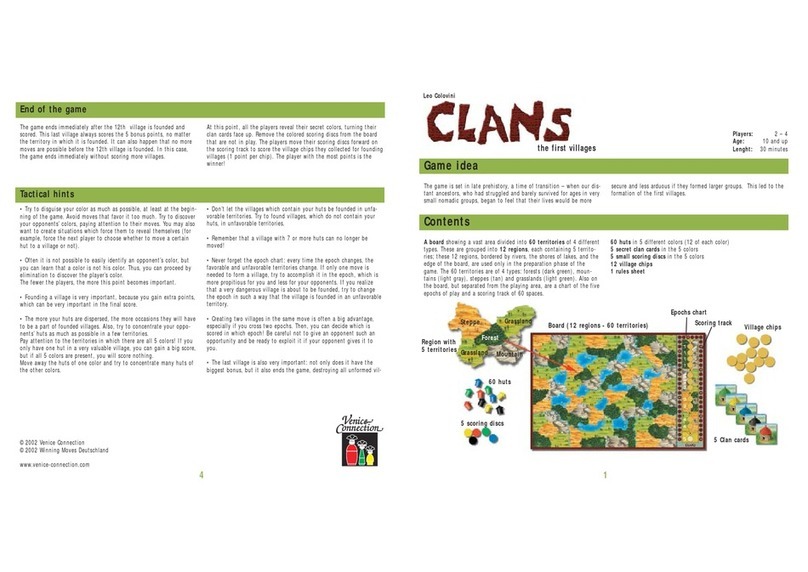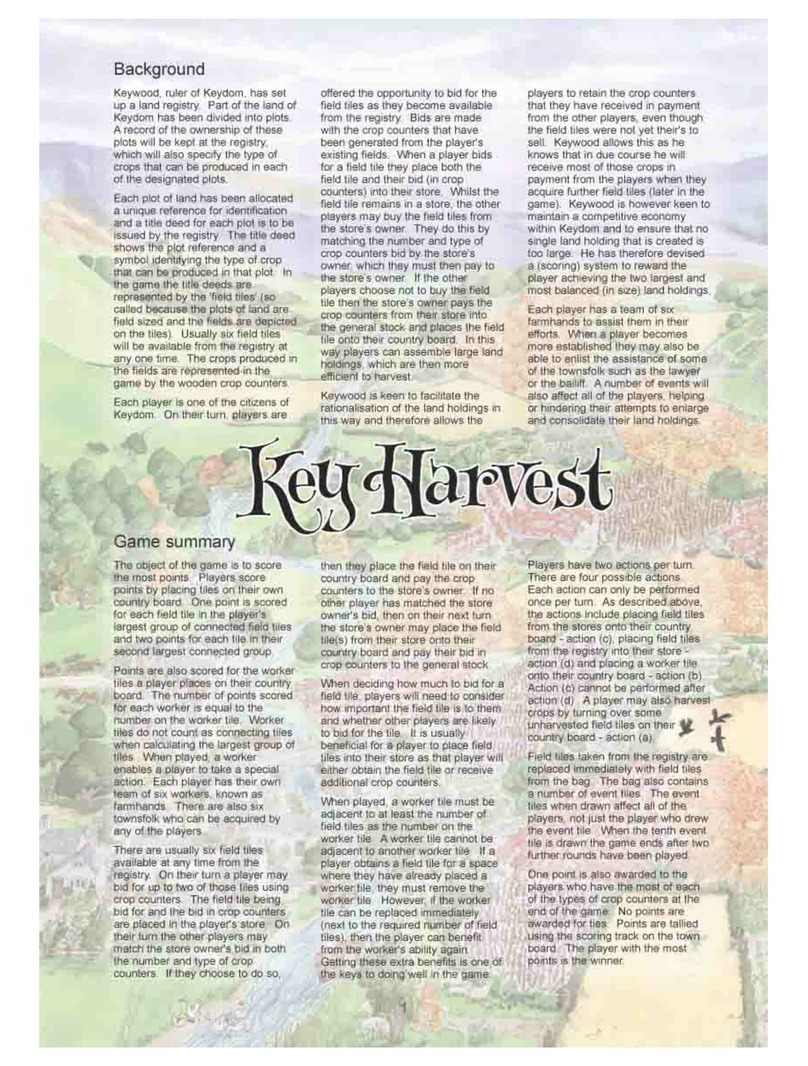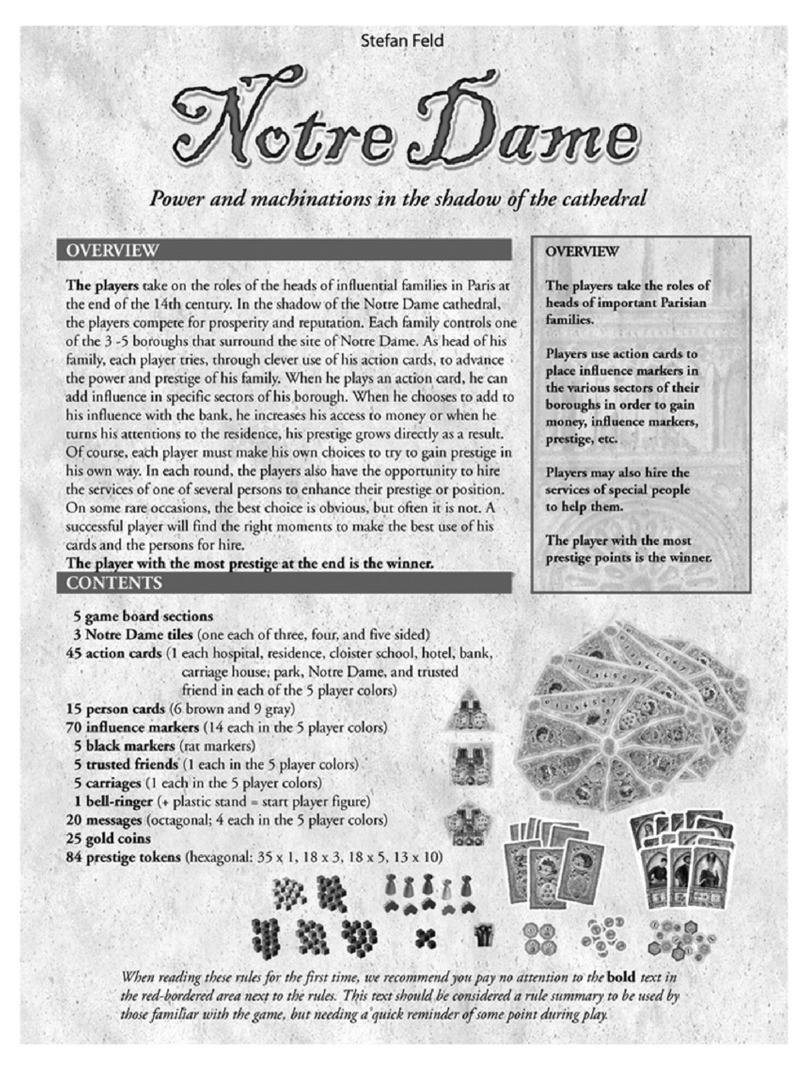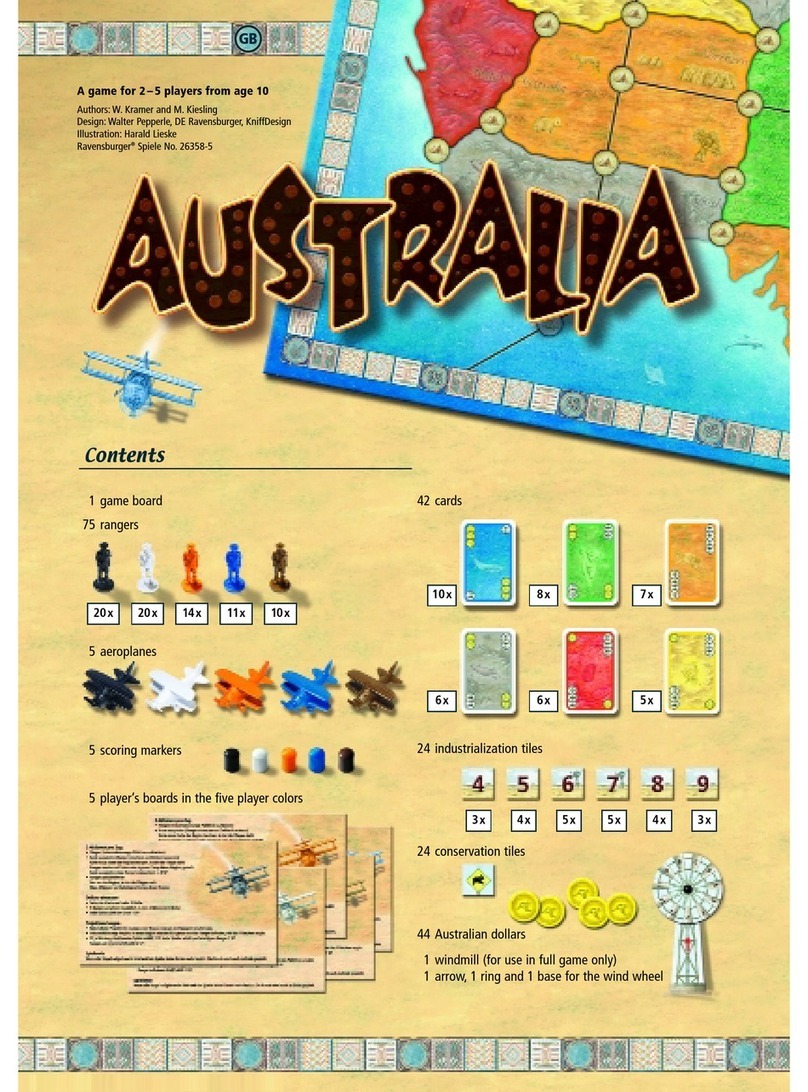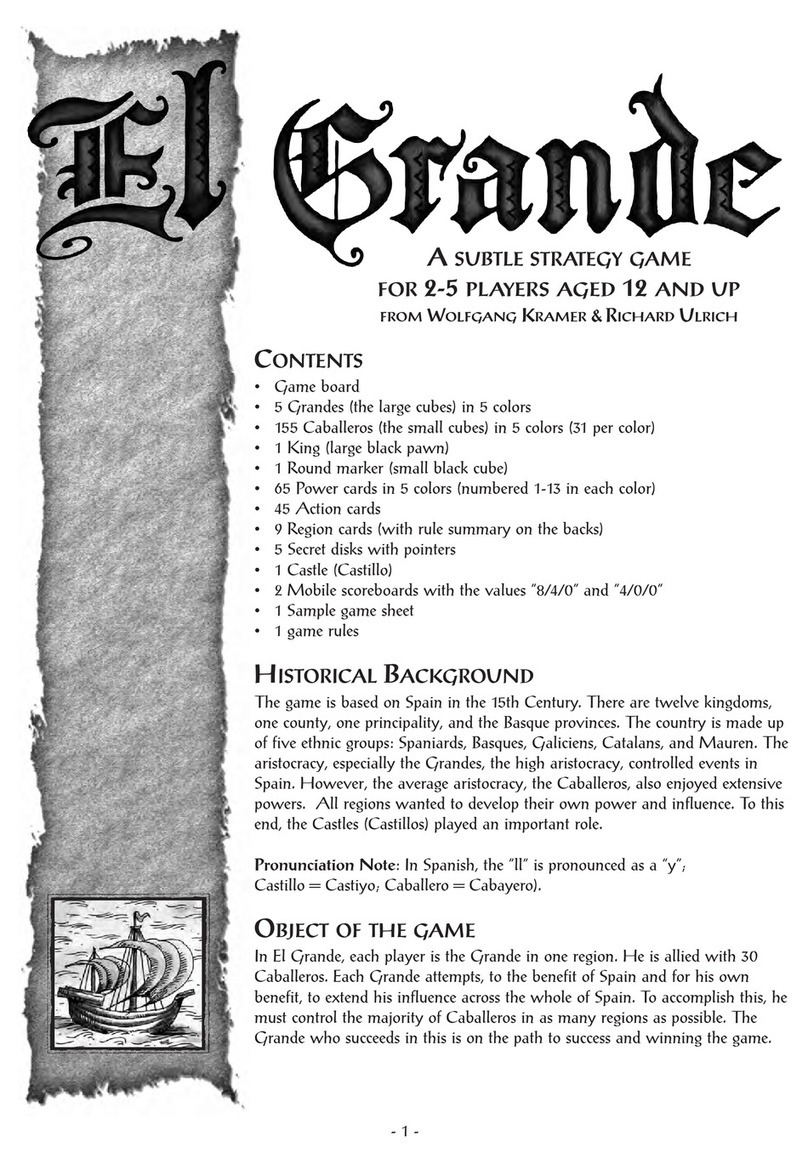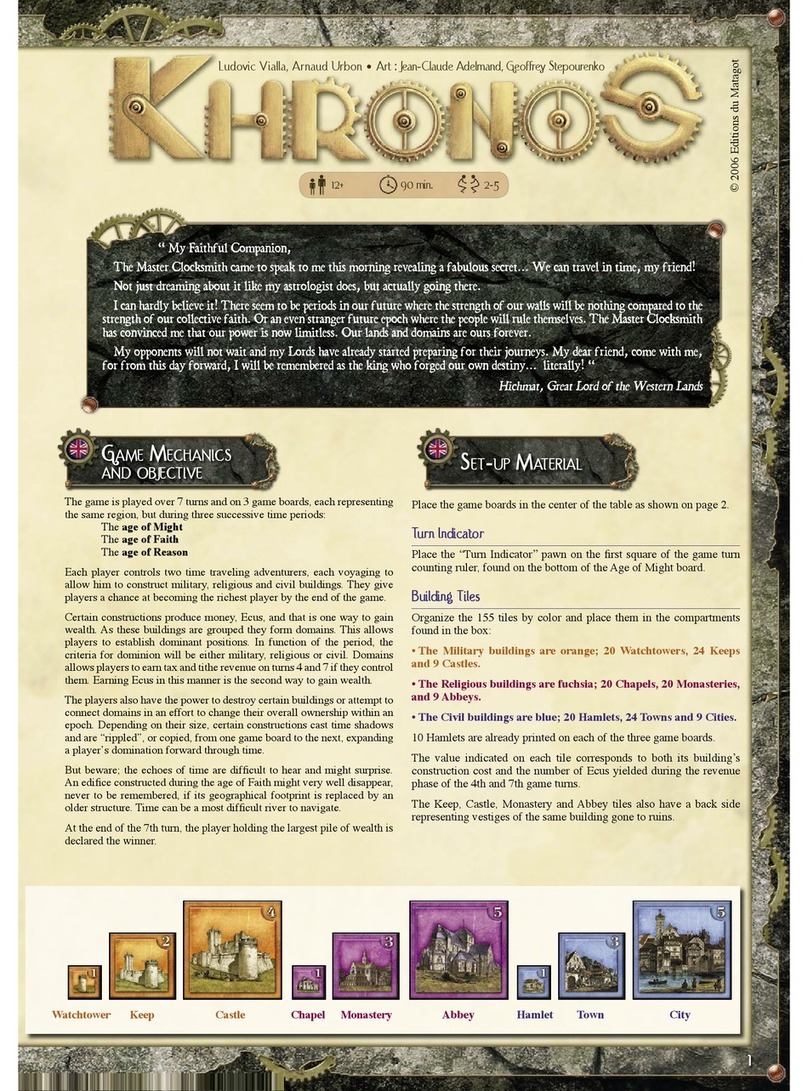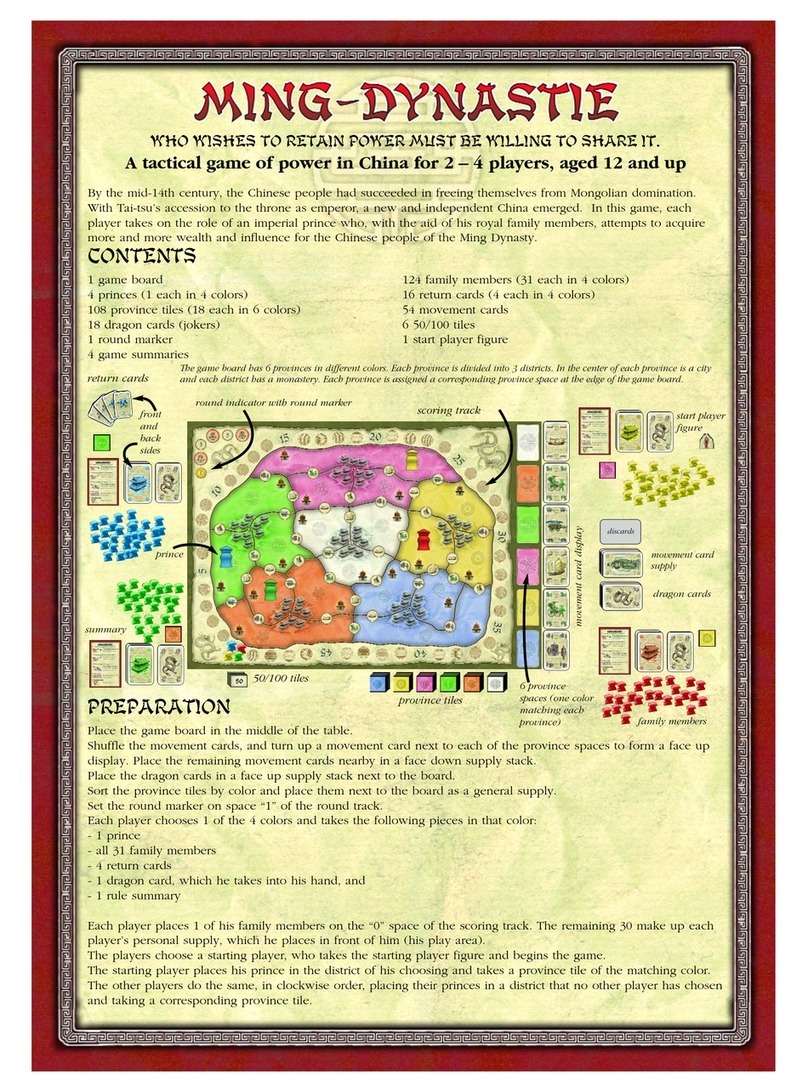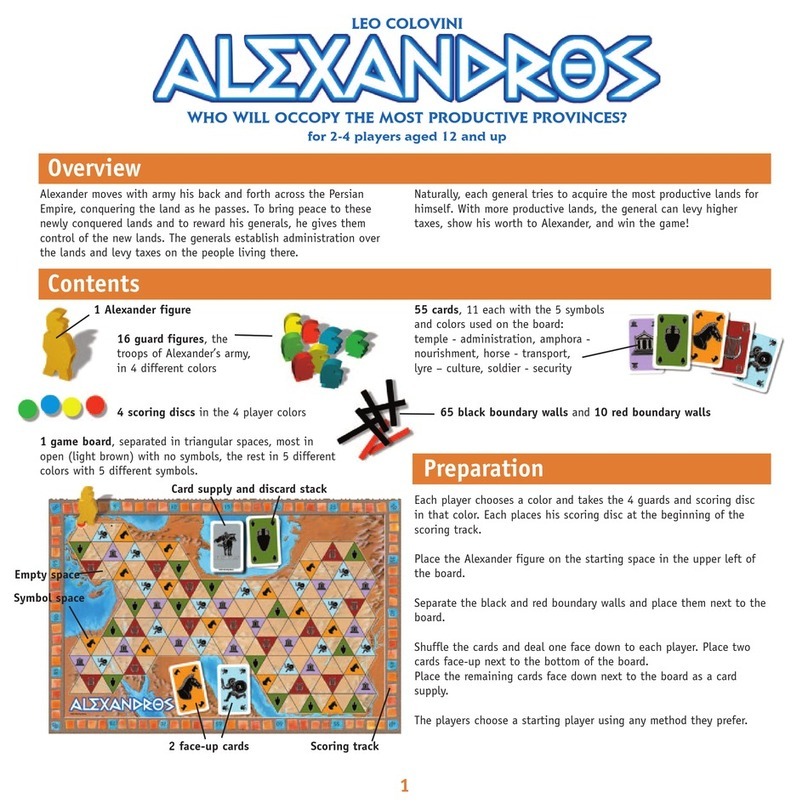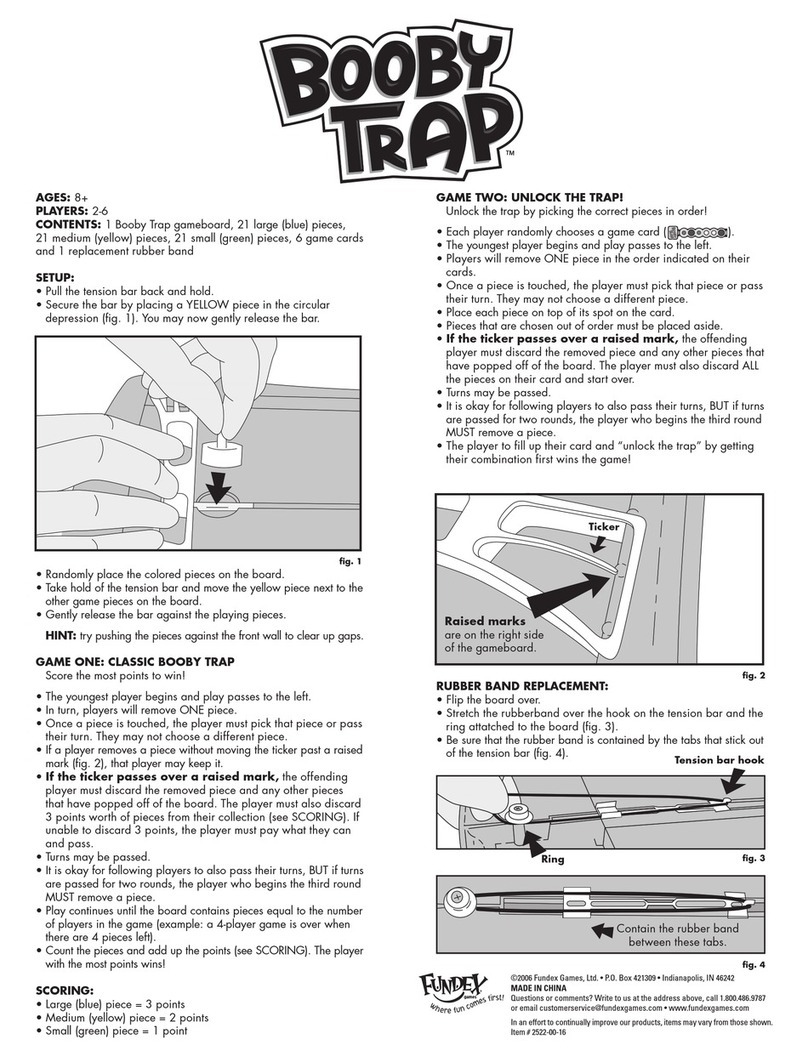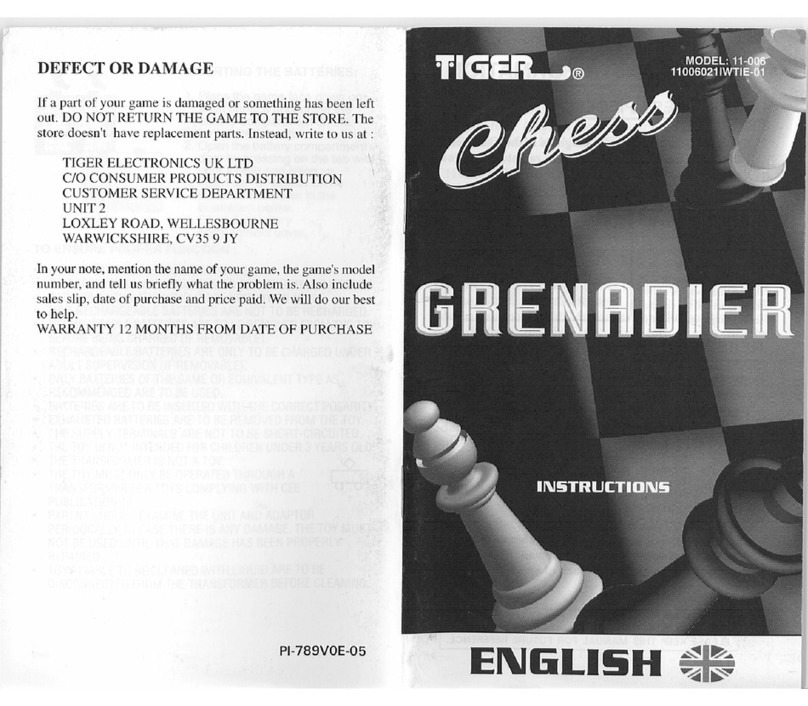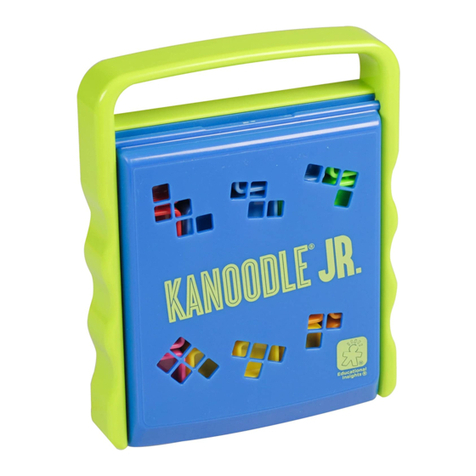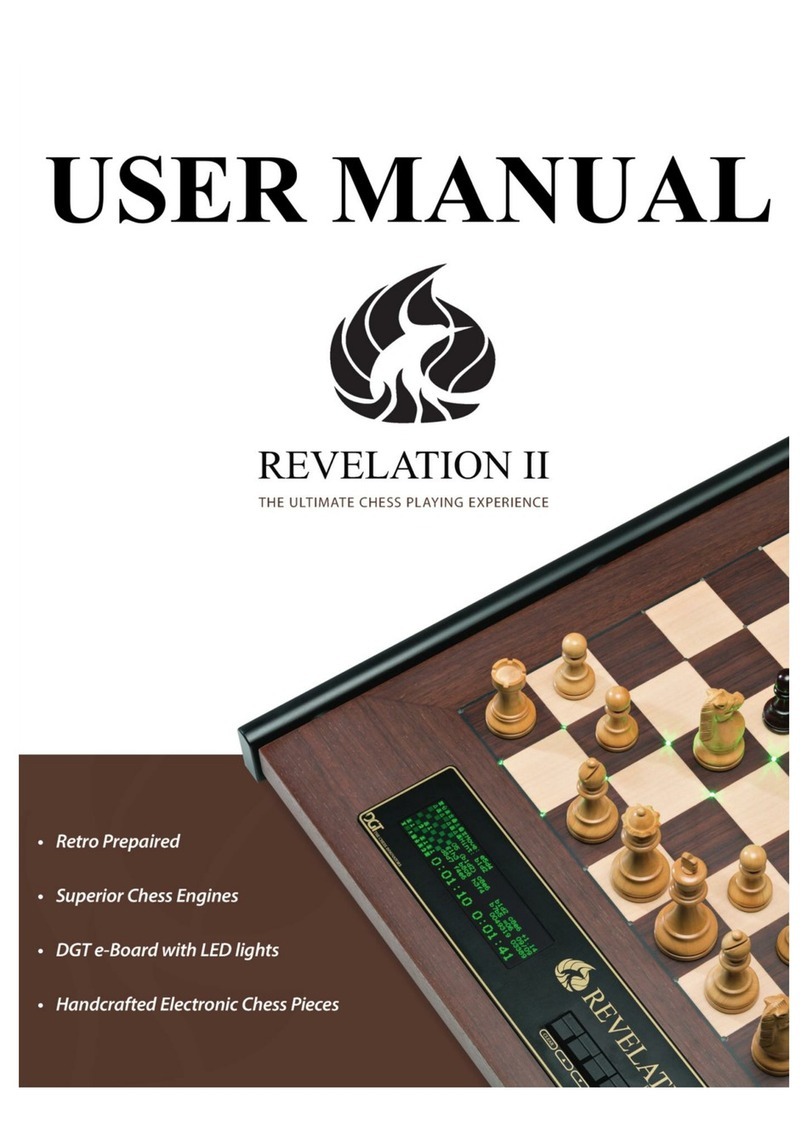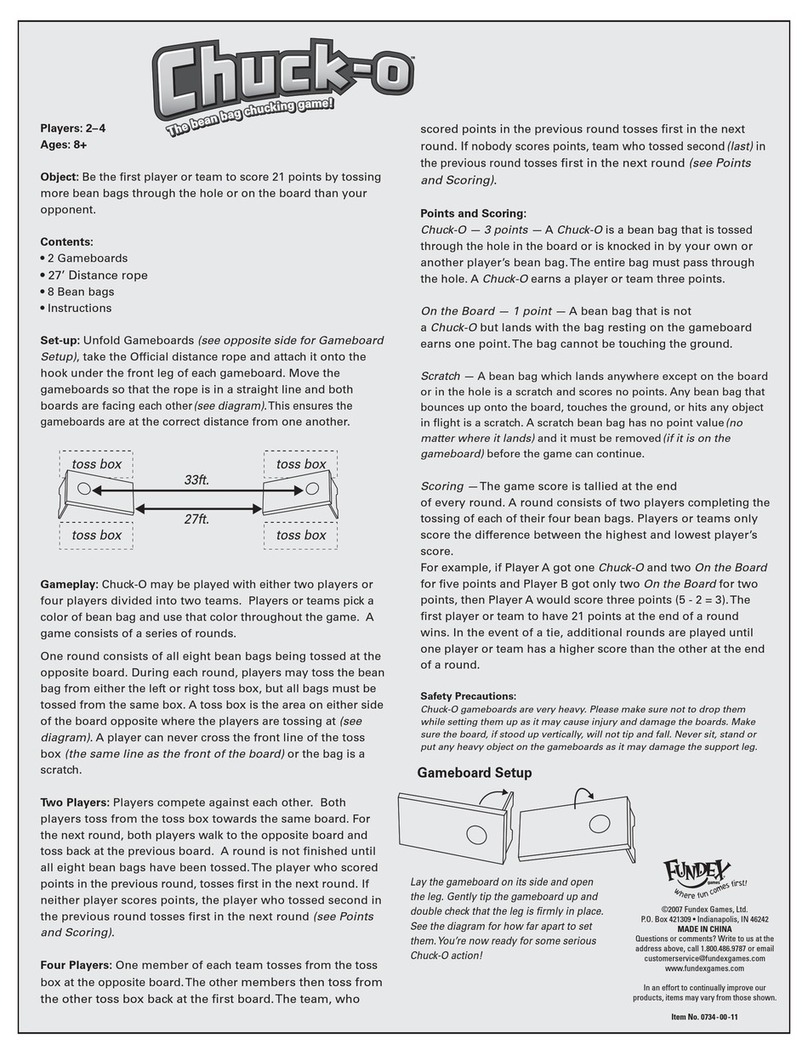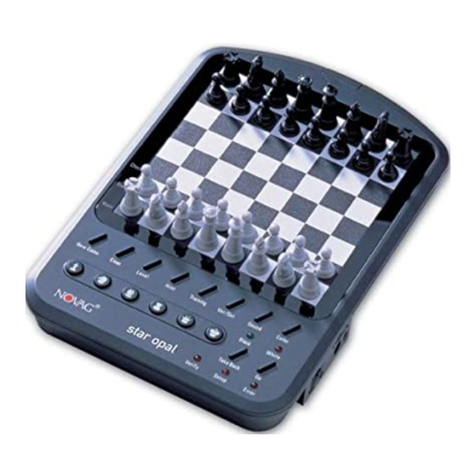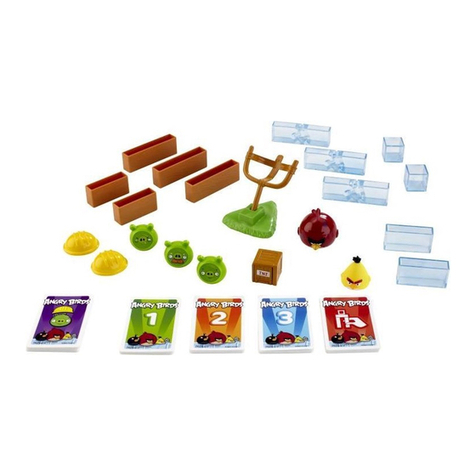6
If two or more players tie for first in the voting, no
player takes control of the Quarantia’s advisors.
All 3 become neutral and are placed on their
symbols on the right of the board.
The players tied for first may each move 2 of their
houses. Each house may be moved from any
district to any other district.
In this case, there is no runner-up.
If there is a single winner,but two or more players
tie for runner-up, no player takes control of the
runner-up’s advisor. Instead, it remains neutral.
Each of the tied players may move 1 of their
houses. Each house may be moved from any
district to any other district.
Elections in the districts
The winner of the election takes control of the
district’s advisor and stands it in the area of his
choice (not its home district). If he abstains, he
neutralizes the advisor and moves 1 house to or
from this district. He then may place 2 houses
from his supply in this district.
The runner-up may now place 1 house from his
supply in this district.
All other players get nothing.
If two or more players tie for first in the voting, no
player takes control of the advisor.It is neutralized
and placed on its symbol on the right side of the
board. Neither player may move a house. Each
of the tied players may place 2 houses from their
supplies in the district.
In this case, there is no runner-up.
If there is a single winner,but two or more players
tie for runner-up, each tied player may place 1
house from their supply in the district.
When a player has the opportunity to place a
house, but has no more houses in his supply, he
must abstain from placing the house and, thus,
loses the opportunity to place a house.
Building palaces
Whenever a player places or
moves a house into a district, he
immediately checks to see if he
may build a palace there. Players may not build
palaces in a district at any other time.
To build the first palace in a district, a player
needs 3 houses in the district (note the number
on the place for the first palace). For the second
palace in a district (regardless of who built the
first), a player needs 4 houses in the district (note
the number on the place for the second
palace). The third palace requires 5 houses and
so on. This represents the need for each
subsequent palace to be greater and grander
than those preceding it.
In each district the players may only build 5
palaces on the 5 available spaces numbered 3
to 7. Beyond that, a player is not limited in the
number of palaces he may build in a district nor
is he required to build any palaces in a district,
If a player has enough houses in a district to
build a palace, he removes the required number
of his houses and returns them to his supply. He
places one of the palaces from his supply on the
next available palace space in the district. If he
has extra houses (beyond those needed to build
the palace) in the district, they remain.
A player who has the necessary houses to build
a palace may abstain. He may, for example, plan
to move them later to another district.
If several players tie for first or runner-up and they
can build palaces,they build at the same time
and each “pays” the same number of houses to
build their palace. The number of houses needed
is the number shown on the first available
building space.
example:
There are 2 palaces In San Marco. Thus, the next
palace will “cost” 5 houses.Anna has 4 houses in
San Marco and Bernd has 3 houses there. Both
tie for first in the election. Each places 2 houses in
San Marco, giving Anna 6 and Bernd 5. Both now
build a palace for 5 houses each, placing them
on the 5 and 6 numbered palace spaces. This
leaves Anna with 1 house in San Marco.
